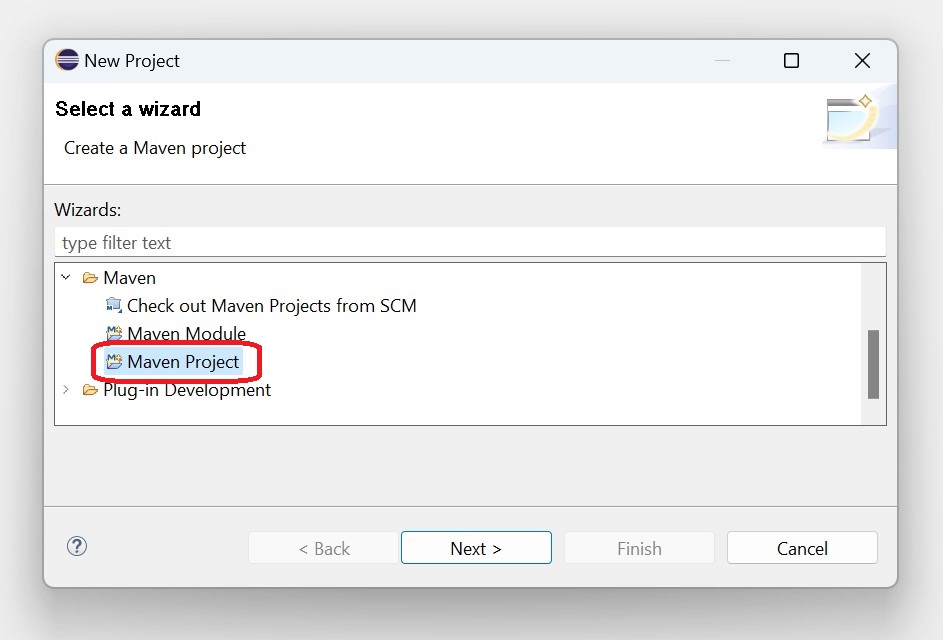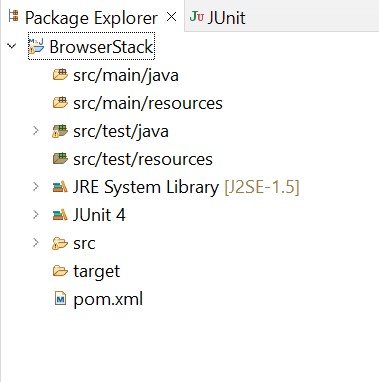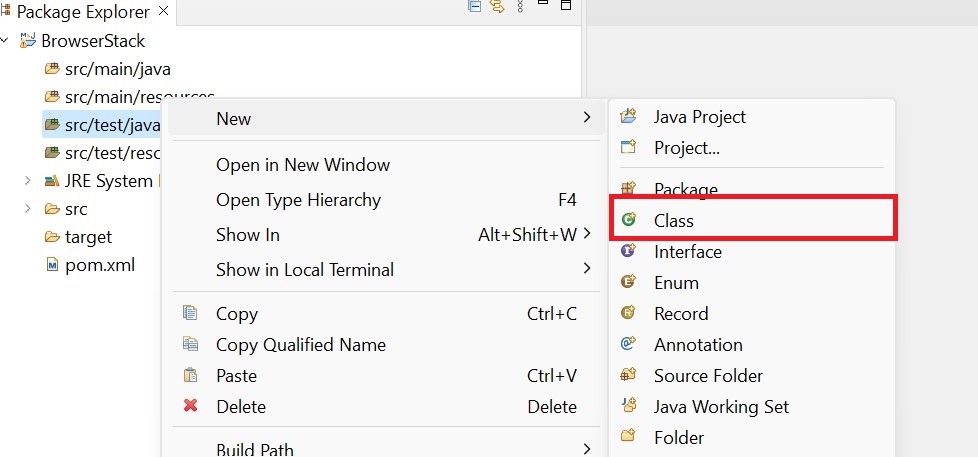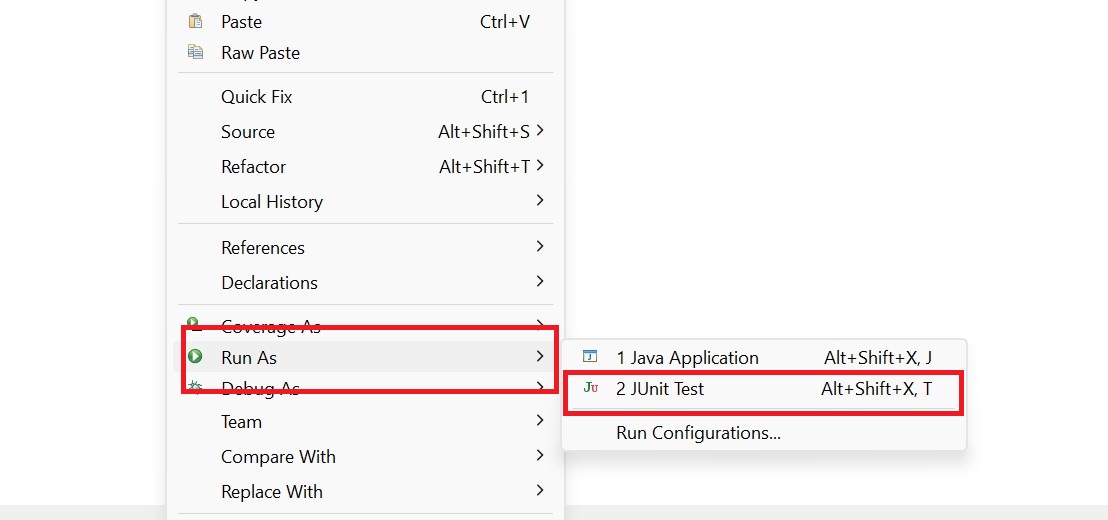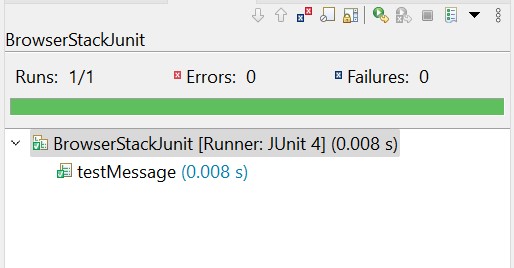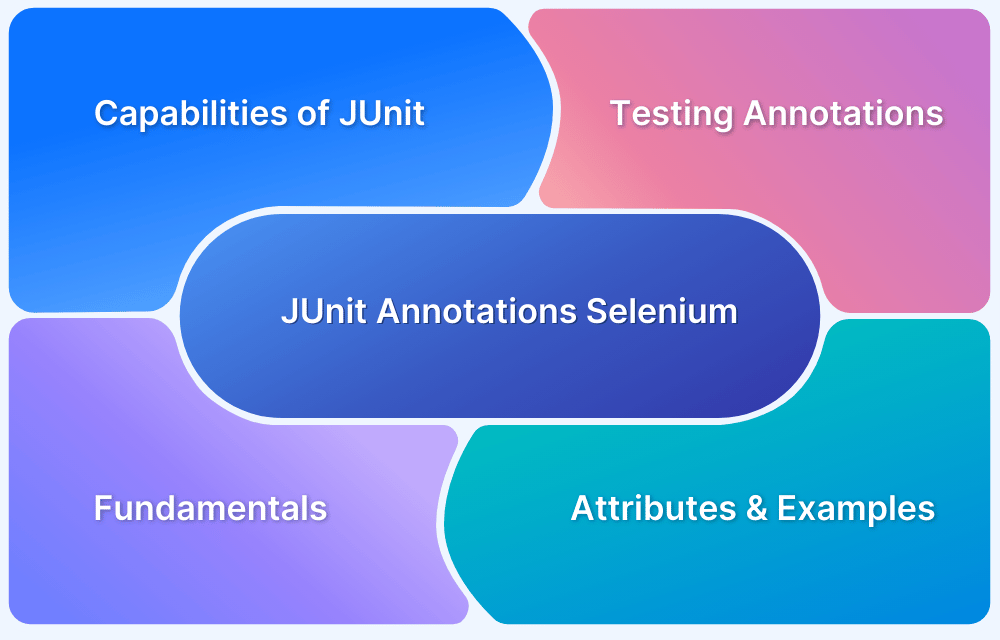JUnit is a popular testing framework that ensures the reliability of Java applications. With Java’s widespread use, efficient testing is essential for maintaining code quality and streamlining development.
JUnit simplifies automated testing and integrates seamlessly with CI/CD pipelines.
This guide covers how to write JUnit test cases to enhance software quality before deployment.
Why use JUnit for unit testing Java applications?
JUnit is a widely used testing framework for Java that simplifies unit testing and ensures code reliability. Here’s why JUnit is essential for Java applications:
- Automated & Repeatable Tests: JUnit allows developers to automate test execution, ensuring consistent results and early bug detection.
- Simple & Intuitive API: With easy-to-use annotations like @Test, writing and managing test cases becomes straightforward.
- Seamless Integration: It works well with IDEs like Eclipse and IntelliJ and build tools like Maven and Gradle, making it CI/CD-friendly.
- Supports TDD: Encourages Test-Driven Development, leading to modular, maintainable, and well-structured code.
- Powerful Assertions & Annotations: Provides rich assertions and lifecycle methods for efficient test execution.
JUnit’s structured approach makes it a preferred choice for unit testing, ensuring Java applications are stable, maintainable, and bug-free.
What are JUnit Test Cases?
JUnit test cases are unit tests written using the JUnit framework to verify the functionality of individual components in a Java application.
These tests help ensure that methods and classes produce expected results, improving code reliability. JUnit provides annotations like @Test, @Before, and @After to structure test cases efficiently.
Importance of JUnit Test Cases
Below are the key reasons why JUnit test cases are important:
- Ensures Code Reliability: Detects bugs early by validating code behavior.
- Supports Test-Driven Development (TDD): Helps developers write test cases before implementing code.
- Automates Testing: Reduces manual effort by running tests automatically.
- Enhances Code Maintainability: Encourages modular and error-free code by enforcing best practices.
- Facilitates Continuous Integration: Works seamlessly with CI/CD pipelines for smooth deployments.
Must Read: Test Driven Development (TDD) in Java
How to write JUnit Test Cases
JUnit tests are written in the same manner as Java projects, however, while writing tests you must be aware of some JUnit annotations. JUnit annotations are blocks of predefined texts provided by the Java API for better structure and readability.
Here is an example of a few frequently used JUnit annotations that come in handy in this tutorial on Java JUnit testing.
- @Test – to identify the actual test case
- @Before – to execute some statement before each test case
- @After – to execute some statement after each test case
- @Ignores – to ignore some statement during execution of test
- @BeforeAll – to execute some statement before all the test cases
- @AfterAll – to execute some statement after all the test cases
Step-by-Step Guide: Writing JUnit Test Case with Example
Now, let’s consider a practical example to understand Java Junit testing. This example, will conduct a simple test using JUnit where:
- First assign some value to a string, and
- Then with the help of the assert keyword, checking if the value assigned matches our intended value.
Prerequisite for Junit Test Cases
- You must have Java jdk installed on your system. To check if Java is installed on your system run the command java –version in the Command prompt. If it is installed, it will display the Java version.
- Any IDE of your choice. In this example, using Eclipse 2022.
Steps to Write Junit Test Cases
Step 1: Create a Maven project
To create a Maven project, open Eclipse and then complete the following steps:
1. Click on File option
2. Hover on the New drop-down menu
3. Click on the Project option
4. Select the Maven project option
5. Enter the Group id and Artifact id of your choice and proceed.
6. Your Maven project is created.
Step 2: Add Maven dependencies
In this step, you have to add some dependencies that will help in achieving JUnit testing. Add JUnit dependency from the Maven marketplace by inserting the dependency in the pom.xml file that you got on our Maven project.
Add this script inside the dependencies tag in the pom.xml file.
<!-- https://mvnrepository.com/artifact/junit/junit --> <dependency> <groupId>junit</groupId> <artifactId>junit</artifactId> <version>4.13.2</version> <scope>test</scope> </dependency>
Step 3: Create a new class file
Now create a new class file where you will write our Junit test. To do so, follow the following steps to create a new class file.
1. Right-click on the folder src/test/java
2. Hover over to new
3. Click on the class and create a file by entering a name of your choice
Step 4: Writing the Test Script
Now the final part is to write the JUnit test after setting up the project. Open the previously created test class file inside the src/test/java folder.
import org.junit. Test; import org.junit. Ignore; import static org.junit.Assert.assertEquals; public class BrowserStackJunit { String message = "BrowserStack is the intended message"; @Test public void testMessage() { System.out. println("Inside testMessage()"); assertEquals(message, "BrowserStack is the intended message"); }
Step 5: Executing JUnit test
Once the test is written, right-click and then select run as JUnit test.
Once the test is executed, on successful completion of the test it will be indicated on the left panel highlighted with green color.
Upon making any slight change in the test script that fails our test, it will be indicated with red color and the log of error will be displayed on the console.
Best Practices for writing JUnit Test Cases
With this Java unit testing example, you would have gained confidence in how to write JUnit test cases. However, to be more efficient in our testing, let’s look at some best practices for unit testing you can follow to ensure that your product is tested more reliably.
1. Test on Real Devices: In order to ensure a consistent and seamless user experience across all devices, always test your products on real devices before rolling them out to consumers. With all the devices readily available, setting up a digital lab becomes very difficult. Therefore, it is recommended to test on real device clouds such as using BrowserStack to keep real user conditions into account.
2. Keep in mind the business: While writing tests for the product you must keep in mind the test aligns with the business requirements of the project.
3. Using Annotations wisely: Annotations are very useful in writing JUnit tests, as they make our code more structured and organized. Annotations were not there in JUnit 3 and are available in JUnit 4 only, which entirely revamped the JUnit testing experience.
4. Test Core methods: It is fairly difficult to write unit tests for all the components present in the project. Therefore, it is important that you write JUnit tests only for the components that are prone to bugs. Moreover, write tests for the components that are used in many parts of the project to ensure greater reliability of the project.
5. Mocking: In JUnit testing, you can only test small chunks of code. There are chances that some codes are dependent on external services, for which, you have to use third-party frameworks such as Mockito, EasyMock, and JMock for mocking external services.
Useful Resources for JUnit
- How to run JUnit 4 Test Cases in JUnit 5
- JUnit Testing Tutorial: JUnit in Java
- How to write JUnit test cases
- How to Ignore a Base Test Class in JUnit
- How to run JUnit Parameterized Test in Selenium
- Understanding JUnit assertions for Selenium Testing with Examples
- Test Automation using JUnit Annotations and Selenium
- How to create JUnit Test Suite? (with Examples)
- Unit Testing in Java with JUnit
- JUnit vs NUnit: Framework Comparison
- JUnit Vs TestNG
Conclusion
JUnit is an open-source unit-testing framework in the world of Java development. JUnit is generally used to write automated tests. The objective of unit tests is to be done in conjunction with the development of the software, so you can run them early in the development process in order to reduce errors at the same time.
JUnit is a simple framework and does not have a steep learning curve. This comprehensive guide covered what is Unit testing, JUnit tests, how to write JUnit test cases, executed a simple test to demonstrate how JUnit functions and also discussed some practices to write efficient tests for our product. One of the most efficient yet important practices that most businesses might miss out on will be testing on a wide range of real devices. BrowserStack is a cloud-testing platform for testing applications quickly on a wide range of real devices.

